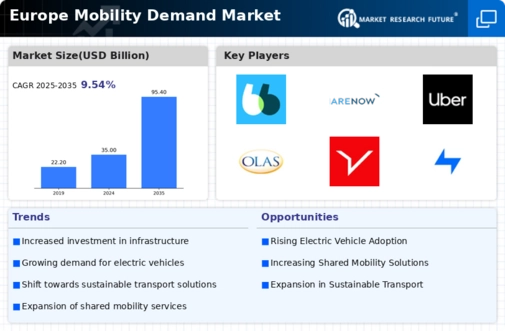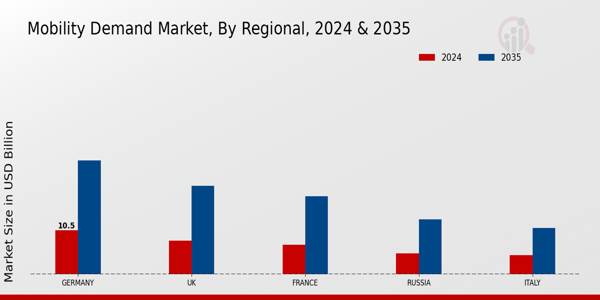The Europe Mobility Demand Market has been subject to significant transformation and competitive dynamics, driven largely by changing consumer preferences, advancements in technology, and the push for sustainable solutions in urban transportation.
As various stakeholders including ride-sharing, car-sharing, and public transportation entities vie for market share, understanding the competitive landscape becomes crucial. The rise of shared mobility services has reshaped how consumers navigate cities, offering alternatives to private vehicle ownership and emphasizing more efficient use of resources.
This market is characterized by a blend of traditional transportation providers and innovative startups, all of which are strategically positioning themselves to meet the evolving demands of European consumers seeking convenience, affordability, and environmental sustainability.
Focusing on Blablacar within the Europe Mobility Demand Market, the company has established itself as a leader in long-distance carpooling services, fundamentally reshaping intercity travel in Europe. Known for its robust platform that connects drivers with empty seats to passengers looking for cost-effective travel options, Blablacar capitalizes on various strengths that enhance its market presence.
The company effectively taps into the growing movement towards sharing economies, allowing users to travel affordably while also enjoying a social aspect of commuting. Blablacar’s strong brand recognition and a vast user base enable it to provide a reliable service, making it a preferred choice for many travelers.
Additionally, its regional adaptability and focus on user experience have allowed it to flourish in various European markets, successfully adapting to local regulations and cultural nuances.
Share Now has carved out a significant niche in the Europe Mobility Demand Market, emerging as a standout player in the car-sharing segment. The company offers flexible access to a fleet of vehicles, allowing users to rent cars by the minute, hour, or day, thereby catering to urban consumers who prioritize convenience and spontaneity.
Share Now’s key service offerings include a diverse range of vehicles, ensuring there is something to meet different user preferences and needs. With a strong market presence in multiple European cities, the company has benefitted from strategic partnerships and collaborations aimed at enhancing its service delivery.
The merger of DriveNow and car2go to form Share Now reflects its commitment to consolidating resources and expanding its footprint in the competitive landscape.
Leveraging technology to streamline the user experience, Share Now excels in providing a seamless booking process and maintaining a reputation for reliability, which are key strengths that bolster its competitive edge in the rapidly evolving mobility market.












